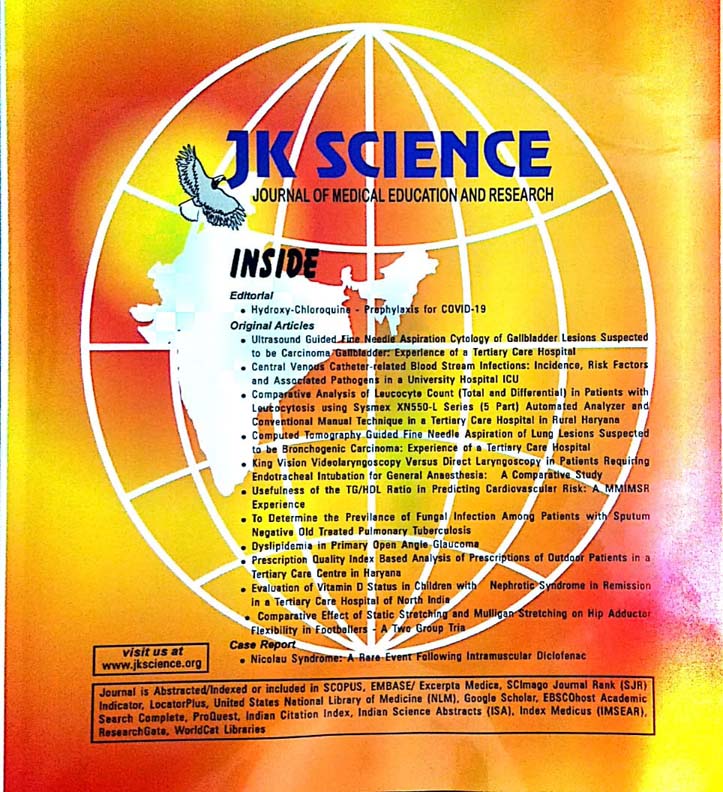Histopathological Spectrum of Lesions Observed in Prostate Specimens - An Institutional Experience
Keywords:
Gleason score, Benign prostate hypertrophy, Prostatic AdenocarcinomaAbstract
Background: Prostatic lesions account for the major afflictions in the geriatric population worldwide. Prostate specific antigen can be used for screening but histopathology remains the gold standard for differentiating benign and malignant prostatic enlargements and definite diagnosis. Furthermore, a precise pathologic evaluation of the prostatectomy specimen can provide additional prognostic factors including pathological stages and surgical margin status.
Methods: A systematic search identified 306 prostatic specimens submitted in the department over a time period of three years (January 2019-December 2021). Relevant clinical data, PSA level and H&E-stained sections were examined for microscopic details and diagnosis.
Results: Benign Prostate Hypertrophy (BHP) was the most common prostatic lesion and accounted for 83% of all cases. The age range was 49 to 90 years with a peak age group between 6th-7th decade. BPH associated with prostatitis and basal cell hyperplasia was seen in 57.8% and 3.3% cases respectively. A single case of non-specific granulomatous prostatitis was seen. Malignant tumours constituted 15.7% of all prostatic specimen. Adenocarcinoma was the histopathological subtype in all primary tumours. A single case of metastatic deposits from bladder tumour was recorded. Gleason score 7 was the most frequent (38.2.8%) in occurrence. Most adenocarcinomas were moderately differentiated (55.3%). Prostate Intraepithelial neoplasia (pre malignant lesion) was seen in 1.3 % of cases.
Conclusion: Benign Prostate lesions occur more frequently when compared to malignant ones. Major proportion of benign lesions was contributed by Benign prostate hypertrophy. A pathologist's awareness of the benign mimics is important for the diagnosis of Prostate carcinoma.
Downloads
Downloads
Published
How to Cite
Issue
Section
License
Copyright (c) 2023 JK Science: Journal of Medical Education & Research

This work is licensed under a Creative Commons Attribution-NonCommercial-ShareAlike 4.0 International License.





